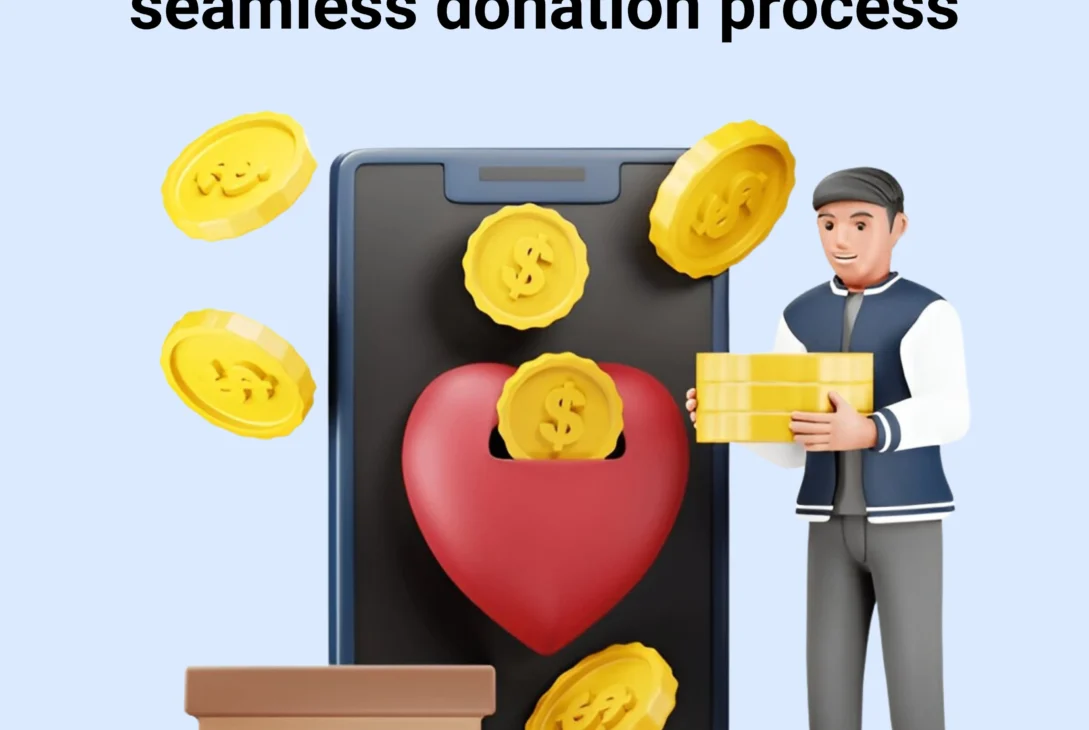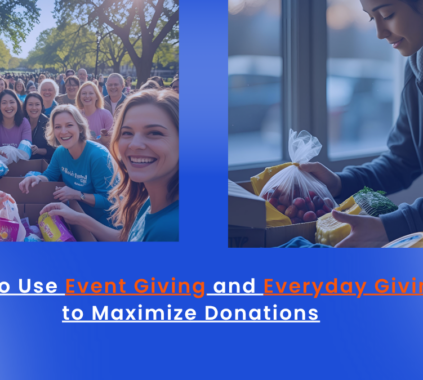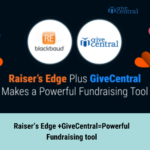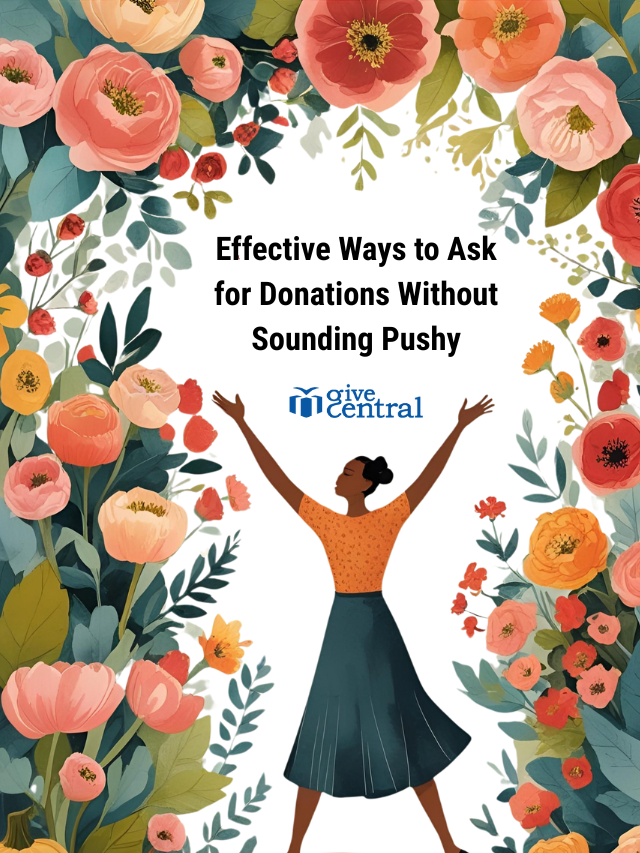How can you make giving easier?
Only 17% of visitors to a nonprofit donation page actually convert. These are either one-time donors or loyal supporters who have already made up their minds to donate to you.
The remaining 83% are whom you should optimize your fundraising efforts for. When they visit your page, they are not entirely convinced about your cause. So one wrong move (a difficult form, or a wrong request), spooks them! One way to solve this problem is by reducing the friction to give. In simpler terms, that means making it easier for your prospects to make a contribution and thus increasing the funds you raise.
Here are 10 ways you can create a seamless donation process for 83% of your audience (who typically leave) to make a donation.
- Lead up to the donation ask:
Every interested prospect who comes to your site will not be ready to donate right away. Instead of hitting them with a donation form straight off the bat, you can start by educating the lead about your cause.
Here is a good example of how the Human Rights Campaign does it:
The prospect who comes in is first shown how HRC is helping social change. Then, they get the prospect more involved in their cause with small requests (asking them for comments or signing up to be a member).
Finally, they make the ‘big ask’ of asking the supporter to volunteer. Even though it is not a donation request, it is an excellent way to gradually lead the prospect to making a big commitment.
- Have a two-way conversation:
Intercom found that website visitors are 82% more likely to convert if they have had a conversation via chat.
That means if your ongoing conversion is 17% (going by the industry average), after a conversation, this number jumps to 31%.
Such a huge jump in conversion numbers is because genuine conversations are more persuasive than a static form.
So, while your online forms, emails, and donation requests are incredibly powerful tools, they can be integrated with live conversations to be more effective.
For instance, you can engage your website visitors via a chatbot. Ask every visitor why they are visiting, then guide them to relevant pages.
In this scenario, a visitor will get directed to a donation page only if they mention that they are interested in donating to your cause.
- Make the conversations relevant:
Yes conversations convert better than forms. But for them to be effective, the conversations need to be relevant and meaningful to the visitor.
One way to do it is to tailor the conversation based on your prospects’ behavior on s
it. For e.g., returning (or second-time visitors), get asked a different question, based on how they interacted with your organization previously.
In this example below, Drift knew what I was reading up about on their site. They used that information to engage me via a chatbot when I visited them again.
The take-away here is not the importance of chatbots. It is the use of donor information to have relevant conversation.
So how this works for your fundraising can be totally different.
You can have donor management software to keep track of all your donor data. Using this information you can then reach out to highly engaged donors and see if they would like to convert.
A call center software can help you create a phone book of only interested donors and reach out to them for donations.
Or, you can send a personalized text message to all your engaged followers appealing for some volunteer help.
Ensure that there is seamless integration between your communication tool (like say, CallHub) and your donor management platform. It will simplify the flow of information and help make your campaigns highly effective.
- Simplify giving:
In a nutshell, make it extremely easy for the donor to make a donation. Your prospects should be able to donate with the click of a button.
With each added step, you increase the chances of the prospect dropping off without making a contribution. Here are some suggestions you can explore:
- Split a long form into smaller sections to reduce form fatigue.
- Add a recurring (monthly giving) checkbox at the bottom of your donation form to make future donations automatic.
- Ask for minimal details upfront (only the strictly necessary ones like Name, address, etc.). Other details can be asked before sending the donor acknowledgment letter.
- Save details of recurring donors so that they don’t have to fill in details every time.
There are of course more ways for you to simplify your forms and make them more conversion-centric. But these pointers can get you started in the right direction.
- Mix ‘big asks’ with ‘smaller ones’
After a donor has made a contribution, the thumb rule is to thank them and send them information on how their money is used.
You can tweak things here a bit. You can make an ‘ask’ again. However, it cannot be the same donation request. Instead, it should be for a ‘small ask’ that the prospect can easily do. Eg. sign a petition, or share a rally invite within their network.
Such low-barrier actions get your donors more involved in your cause and motivate them to give again.
- Pivot your major asks with lesser asks
Take a moment to look at your calling scripts. According to them, here is what your volunteers can do if a donor says ‘no’ to a donation request
- Thank and hang up
- Politely (or subtly) try to find out why they are declining to give
There is however a third option. Your volunteers can see if they would like to contribute in other ways (and not just money).
That is, if a prospect declines to donate, see if they would be willing to volunteer, or attend an event, or come for a rally.
Even if they are reluctant to make a big commitment like a donation, they would be more willing to explore other options.
By making a ‘smaller’ ask when they shoot down a bigger ask, you are expanding your chances for winning a supporter – who can later turn into a donor.
- Reduce anxiety to give
All first time donors have a degree of doubt before making a donation. It usually stems around whether they are making the right decision in choosing your organization.
Conversations (like mentioned above) are one way to alleviate those concerns. Another way to reduce the giving anxiety is by showing the impact your organization has on society.
If your prospects trust you to effect social change, they would be more willing to give. For instance, while on a call with a prospect, you can text them additional information about your nonprofit program. This could be a link to your annual report, or research to show the impact your latest campaign has had on the problem.
- Make the follow-up count
How you communicate with your donors after they make a donation dramatically influences their giving behavior. A generic ‘thank-you’ will not suffice.
Crafting a meaningful donor acknowledgement letter, or a newsletter detailing how their contribution helped make a difference will build trust with your donors and encourage them to give again.
- Channelize the ‘Yes’ momentum to build relationships
Once a prospect has already taken an action (like read your content/ attended your event), they would be open to getting more involved with your cause.
Approach prospects who attend your rallies and events and ask them to sign-up for updates from your organization. 350.org, an organization that fights climate change, used this strategy in one of their events.
They saw that, roughly, 50% of people who attended the event chose to sign up via opt-in text messages.
If opt-in is too high ask, see if they would be willing to spread the word. This helps in building social proof, and getting more eyeballs on your organization.
The idea is to encourage your already involved supporters to do a little more – without wasting much time.
- Use peer to peer fundraising to increase trust
Trust is a major factor that affects giving behavior. People give to organizations that they trust.
A direct recommendation by a peer is the most powerful in winning trust. That is why peer to peer fundraising is highly successful.
So ask your supporters to reach into their personal network and recommend your cause. When a prospect sees your organization being backed by a like-minded peer, they would be more inclined to trust you.
Take-Away
While the fundraising numbers can seem pretty dismal, it is irrefutable that charitable giving is up. That is, people donate out of genuine philanthropic interest and not merely to evade tax.
As a nonprofit, that works in favor of your fundraising efforts.
By making it simpler for them to donate, you can channel their willingness and make your fundraising efforts successful.
The tips I have shared will get you started in that direction. Try it out and let me know what further challenges you face!
charitable giving donor management software donor thank you fundraising goal giving peer to peer fundraising
Last modified: February 20, 2025






















